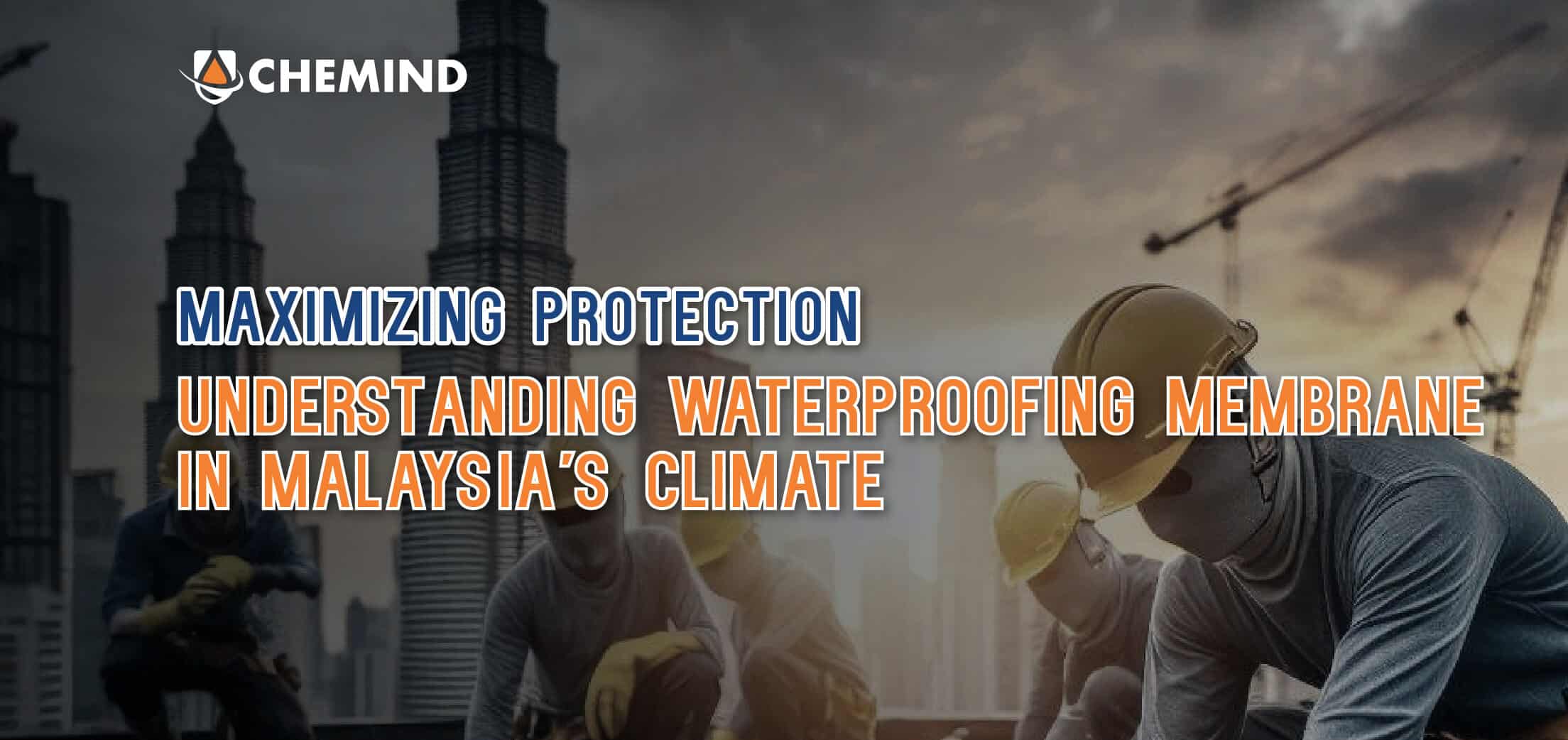Maximizing Protection: Understanding Waterproofing Membranes in Malaysia’s Climate

In the case of Malaysia, which has the heavy tropical rainfall plus humidity always that is there, the protection of buildings from water damage is vital. Here is where waterproofing membranes unveil their essential responsibility in the arena. This blog is going to open up the topic of waterproof membranes, explain how they work and try to establish why they are most suitable for Malaysian climate conditions.
What are Waterproofing Membranes?
Waterproofing membranes are thin sheets which are installed by water spreading process to be a impeding membrane against water leakage. They have a make-up consisting of materials like butyl (modified bitumen), PVC, EPDM or super engineering plastics. These membranes can be used bilaterally: within roofs, basements, balconies, and foundations to stop water penetration and to assure that the ones protected are not affected by surrounding elements.
Let us consider deepening into the mechanism of how waterproofing membranes work. Grounding of this type of structural waterproofing technology has created a widespread awareness in the construction sector of the essential role that it plays and has also reduced moisture levels and mold growth in the interior of buildings.
Waterproofing membranes function by forming impenetrable, multi-layered barriers that act as an impenetrable shield for water, thereby preventing the seepage through the building envelope. No air bubbles shall be the defects and they stick to the substrate very tightly in order to provide a water-tight seal that is capable of withstanding the challenges posed by the Malaysian climate, which includes heavy rainfall, humidity and temperature fluctuations.
Installation of membranes relies on their type with installation methods differing, but the goal remains the same – a guarantee of solid protection against water seeping inside. The application of membranes could be done by torch-applying, self-adhering, liquid-applied method. It gives impermeability to buildings, and keeps them in a good condition even during the years of water exposure.

Advantages of Waterproofing Membranes in Malaysia's Climate
- Resilience Against Heavy Rainfall: When it comes to Malaysia, the country sees a plentiful rain across the year, especially during the monsoons. Waterproof membranes allow robust fight against accumulating water inside becoming floodgates that prevent leakage and water damage even under the strongest rainstorms.
- Resistance to Humidity: Humidity level, can be especially problematical as building materials frequently absorbs this moisture, in many cases leading to the growth of mold, rot or structural decay. Waterproofing membranes function as any barrier, so that moisture contents are sitting comfortably and safeguarding indoor air quality, not the other way around.
- Durability in Tropical Conditions: One of the major challenges for building materials in Malaysia is its tropical climate, which can be hard with UV exposure, heat and humidity. The material are degraded faster. Waterproofing membranes are designed in such a way that they stand up these challenging situations and carry out prolonging of the shelter from frequent drainage or repairing needs.
- Versatility Across Applications: For the benefit of residential construction to commercial buildings and projects, waterproofing membranes have a variety of purposes that is not limited only to one. Roofing off the waterproofing membrane, decks of podium or below ground level is important areas. The membrane is tailored according to the specific needs of the building.
Conclusion
In Malaysia’s climate where moisture and other wet challenges are in abundance, waterproofing membranes in front are guarding the buildings against water cut. The fact that they can create a very strong, impenetrable wall without allowing any movement of water or air is the reason why they are widely considered as the best products for extending the lifetime and stability of the buildings. Through investing in quality waterproofing membrane materials that match the uniqueness of local weather conditions, developers and opponents are adequately protected from unfavorable weather events even when these remain unpredictable.
Other popular post you might be interested
- 5 tips to waterproofing toilet and bathroom
- How to Prevent Water Damage to Your Home with an Effective Waterproofing System
- The guide to Waterproofing Membrane
- How to waterproof your bathroom and toilet with CHEMFLEX R100
- Benefits and disadvantages of waterproofing sheet system
- Water leaking in condominium apartment from upstairs. Who should repair?
- MEASAT Global RC Rooftop waterproofing works
- Benefits and Disadvantages of Liquid Waterproofing System
- Advantages and Disadvantages of Polyurethane (PU) Liquid Waterproofing
- House Waterproofing Contractor Guide for Malaysia Home – Type of Waterproofing
